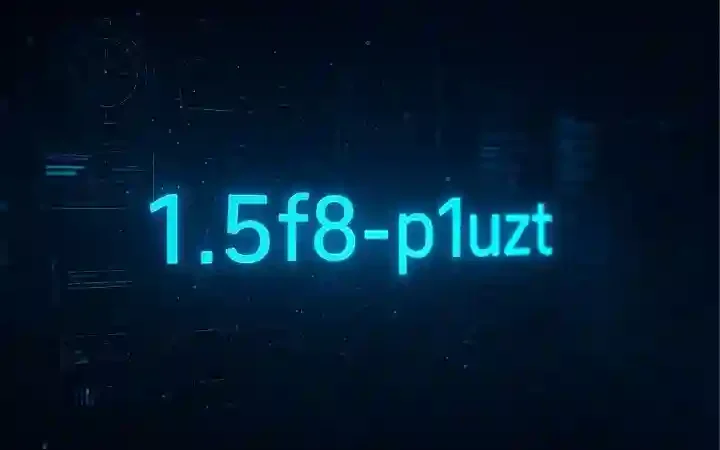What is Hizzaboloufazic? Definition, Purpose, and Key Features

The term What is Hizzaboloufazic refers to a modern conceptual framework that represents adaptability, innovation, and continuous evolution in digital and organizational systems. It focuses on how structures can dynamically adjust, optimize, and respond to changing environments, making processes more intelligent and efficient over time.
Understanding What is Hizzaboloufazic helps highlight the importance of flexibility and smart automation in today’s fast-changing world. It symbolizes the future of intelligent design—where systems evolve naturally, combining human creativity with advanced technology to create harmony, innovation, and self-improving mechanisms across multiple industries and applications.
Introduction to Hizzaboloufazic
In today’s rapidly evolving digital era, new ideas and terms frequently emerge that reshape how we understand technology, innovation, and modern systems. One such intriguing concept that has recently gained attention is Hizzaboloufazic. The term may sound unfamiliar or even abstract at first, but it represents a growing interest in advanced methodologies and dynamic frameworks designed to enhance digital efficiency, system adaptability, and conceptual innovation.
The term “Hizzaboloufazic” has been circulating across discussions related to futuristic systems, experimental technologies, and conceptual modeling. People are curious about what it stands for, why it is being talked about, and what potential it holds in practical contexts. Understanding Hizzaboloufazic isn’t merely about decoding a name—it’s about exploring the underlying structure, logic, and framework that define it. As industries continue to blend creativity with computation, grasping such terms helps professionals and enthusiasts stay aligned with the latest developments shaping tomorrow’s innovations.
Meaning of Hizzaboloufazic
At its core, Hizzaboloufazic is a conceptual term that symbolizes adaptability, dynamic functionality, and structural integration. It can be viewed as a framework or ideology that promotes system harmony, data fluidity, and responsive design across multiple disciplines. Unlike conventional systems that follow rigid rules, Hizzaboloufazic encourages fluid adaptation based on environmental, technological, or behavioral inputs.
The background of the term “Hizzaboloufazic” lies in its representation of complexity within simplicity. It embodies the philosophy that even complex mechanisms can operate efficiently if built on well-structured, modular principles. Conceptually, it could refer to any adaptive structure—digital or organizational—that evolves in real-time.
As for the origin of the name, “Hizzaboloufazic” appears to be coined to capture a futuristic essence. It reflects a blend of innovation and mystery, a word designed to provoke curiosity and intellectual engagement. In discussions surrounding conceptual frameworks and emerging digital systems, such coined terms often represent prototype models or theories that aim to break conventional limitations.
Purpose of Hizzaboloufazic
The primary purpose of Hizzaboloufazic is to establish a flexible, self-improving model capable of integrating various elements of technology, human interaction, and data interpretation into one cohesive structure. In other words, it stands for a system that constantly learns, adjusts, and improves based on the feedback it receives.
In terms of functionality, Hizzaboloufazic operates by analyzing contextual data, recognizing evolving patterns, and optimizing outcomes without manual intervention. It prioritizes scalability, accuracy, and adaptability—qualities essential for any advanced modern framework.
The real-world relevance of Hizzaboloufazic can be seen in sectors that demand real-time adjustments and high-level efficiency. Whether in digital systems, business management, or AI-driven environments, the concept promotes balance between automation and creativity, helping systems operate in harmony with both user input and environmental change.
Key Features of Hizzaboloufazic
What makes Hizzaboloufazic stand out is its range of unique features that combine logical design with continuous adaptability. Some of the core aspects include:
- Dynamic Structure: It adapts its internal configuration based on new inputs or conditions, allowing for real-time updates.
- Scalable Framework: Hizzaboloufazic systems can expand or contract in complexity without losing stability or accuracy.
- Contextual Awareness: It interprets data within the context of its environment, enabling smarter, more relevant outcomes.
- Interdisciplinary Compatibility: The framework can blend across multiple sectors—AI, data management, automation, or creative design.
- Self-Optimization: Through feedback loops and intelligent algorithms, it continuously improves its performance.
For instance, in a use case scenario, Hizzaboloufazic could represent a system architecture where AI models adapt to user needs dynamically. Similarly, in business strategy, it could symbolize a flexible structure that redefines operational decisions based on market changes.
How Hizzaboloufazic Works
The operation of Hizzaboloufazic follows a logical and adaptive sequence. While it may vary depending on its application, the foundational mechanism can be summarized in three core stages:
- Input Analysis: The system begins by collecting and interpreting data from its environment—this could include digital signals, user behaviors, or external conditions.
- Dynamic Processing: Using built-in adaptive algorithms, it processes this data to identify patterns and trends.
- Self-Adjustment: Based on outcomes, it modifies its internal parameters or structure to enhance efficiency or accuracy.
From a technical perspective, Hizzaboloufazic operates on modular architecture. Each component interacts with others through intelligent linking mechanisms, ensuring synchronization across the entire system.
For beginners, imagine Hizzaboloufazic as a “smart ecosystem” that keeps learning and evolving on its own—much like a human brain that adapts through experience. It’s a system built to stay relevant and efficient even as external circumstances evolve.
Applications of Hizzaboloufazic
The applications of Hizzaboloufazic span across various industries due to its flexible, adaptive, and scalable nature. Here are some potential domains where it could be applied:
- Artificial Intelligence & Machine Learning: Hizzaboloufazic could represent a framework that enhances self-learning models, improving accuracy and predictive capabilities.
- Business Automation: It can streamline processes, reduce redundancies, and support strategic decision-making through real-time insights.
- Data Management: Hizzaboloufazic’s dynamic system could be applied in large-scale data processing to enable context-based organization and retrieval.
- Creative Technology: In digital arts or UX design, it could enhance adaptive creativity tools that respond to user preferences dynamically.
- Smart Infrastructure: From IoT networks to urban planning models, it could facilitate systems that adapt to real-world conditions automatically.
In short, Hizzaboloufazic acts as a universal design logic—something that brings coherence to complex systems while maintaining flexibility and adaptability.
Benefits of Hizzaboloufazic
The adoption or understanding of Hizzaboloufazic offers several distinct advantages, both immediate and long-term:
- Enhanced Efficiency: Systems built on its principles tend to use resources more effectively.
- Adaptive Intelligence: It promotes intelligent responsiveness, reducing the need for constant manual updates.
- Scalability: Whether small or large, Hizzaboloufazic-based frameworks can grow without structural compromise.
- Data-Driven Decision Making: Its analytical capabilities allow for smarter decisions based on live information.
- Sustainability: Continuous improvement mechanisms minimize waste and optimize energy or resource use.
From a comparative viewpoint, traditional systems are often static—requiring human intervention to adjust parameters. Hizzaboloufazic, however, symbolizes a paradigm shift toward self-regulating systems, reducing operational friction and improving overall system harmony.
Challenges and Limitations of Hizzaboloufazic
Despite its many advantages, Hizzaboloufazic also comes with challenges that must be addressed for full implementation:
- Complex Setup: Designing a system that self-adjusts and scales dynamically requires advanced architecture.
- Data Dependence: Its efficiency relies heavily on the quality of incoming data.
- Interpretation Ambiguity: Since it’s a conceptual framework, different industries may interpret it differently, causing inconsistency.
- Resource Demand: Adaptive systems often require significant computing power or maintenance in early phases.
- Security Concerns: Self-evolving systems may become unpredictable if not properly monitored or safeguarded.
However, these limitations represent opportunities for further innovation. As technology advances, the challenges associated with Hizzaboloufazic can be mitigated through better algorithms, smarter automation, and enhanced oversight.
Future Scope of Hizzaboloufazic
The future of Hizzaboloufazic looks promising as more sectors move toward intelligent, self-evolving models. Experts predict that frameworks inspired by this concept could shape the foundation of next-generation automation and AI.
In the coming years, we may see Hizzaboloufazic-based systems integrated into real-world applications such as predictive urban design, adaptive climate modeling, and AI-driven research networks. The idea of systems that not only respond but also anticipate change aligns perfectly with the ongoing evolution toward autonomous intelligence.
Moreover, innovation potential is vast—developers and researchers could adapt the Hizzaboloufazic framework to design hybrid models that merge human creativity with machine precision. Such systems could redefine digital transformation by creating ecosystems that learn and evolve collaboratively.
How to Get Started with Hizzaboloufazic
For individuals or organizations curious about exploring Hizzaboloufazic, the starting point involves understanding its philosophy and structure. Here’s a simple roadmap:
- Research and Familiarization: Begin by studying the conceptual foundation—what adaptability, modularity, and scalability mean in your context.
- Identify Use Cases: Determine where Hizzaboloufazic logic fits—whether in software systems, organizational design, or creative innovation.
- Develop a Prototype: Implement a small, adaptable model that responds to variable inputs.
- Integrate Feedback Mechanisms: Allow the system to evolve based on real-time feedback.
- Optimize and Expand: Gradually scale your model, incorporating more layers of data and automation.
Tools and resources such as adaptive AI platforms, modular coding environments, and analytics dashboards can help simulate and understand how a Hizzaboloufazic-like structure functions. For enthusiasts, experimenting with open-source AI frameworks can be an excellent starting point.
Conclusion
In conclusion, Hizzaboloufazic is more than just an abstract term—it symbolizes a forward-thinking approach to system design and innovation. It embodies adaptability, intelligence, and seamless integration between technology and context. Whether interpreted as a theoretical model, a design philosophy, or a futuristic framework, it represents the ongoing pursuit of balance between automation and creativity.
As we move into an era dominated by smart technologies and dynamic systems, understanding concepts like Hizzaboloufazic becomes crucial. It challenges conventional thinking, encourages adaptive logic, and paves the way for more intelligent, efficient, and harmonious structures across industries.
Ultimately, Hizzaboloufazic reflects a mindset—a belief that the future belongs to systems that can think, learn, and evolve as dynamically as the world around them.
Also read : How to Install 35-ds3chipdus3






